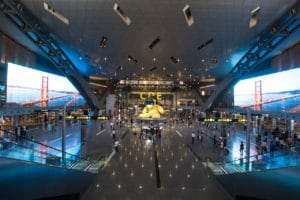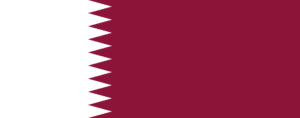Established in 2005, Qatar Investment Authority is the country’s sovereign wealth fund, specializing in foreign investment. Due to billions of dollars in surpluses from the oil and gas industry, the Qatari government has directed investments into United States, Europe, and Asia Pacific. As of 2013, the holdings were valued at $100 billion in assets.
Transportation:
As driving is the primary mode of transport in Qatar, the road network is a major focus of the transport plan. Project highlights in this segment include the multibillion-dollar Doha Expressway and the Qatar Bahrain Causeway, which will connect Qatar to Bahrain and Saudi Arabia and is considered a milestone in regional interconnectivity.
Mass-transit options, such as a Doha metro, light-rail system and more extensive bus networks, are also under development to ease road congestion. In addition, the railway system is being significantly expanded and could eventually form an integral part of a GCC-wide network linking all the Arab states of the Persian Gulf. The airport, too, is expanding capacity to keep up with rising visitor numbers.

Hamad International Airport is the international airport of Doha. In 2014, it replaced the former Doha International Airport as Qatar’s principal airport. In 2016, the airport was named the 50th busiest airport in the world by passenger traffic, serving 37,283,987 passengers, a 20.2% increase from 2015.
Qatar Airways is one of the largest airlines in the world that serves in six continents connecting more than 160 destinations every day. It has won Airline of the Year in 2011, 2012, 2015, 2017 and 2019 due to its outstanding performance and employs more than 46,000 professionals.
Flag of Qatar:
The national flag of Qatar is in the ratio of 11:28. It is maroon with a broad white serrated band (nine white points) on the hoist side. It was adopted shortly before the country’s declaration of independence from Britain on 3 September 1971.
The flag is very similar to the flag of the neighboring country Bahrain, which has fewer points, a 3:5 proportion, and a red color instead of maroon. Qatar’s flag is the only national flag having a width more than twice its height.

Qatar’s historic flag was plain red, in correspondence with the red banner traditionally used by the Kharjite Muslims. In the 19th century, the country modified its entirely red flag with the addition of a white vertical stripe at the hoist to suit the British directive. After this addition, Sheikh Mohammed bin Thani officially adopted a patterned purple-red and white flag which bore a strong resemblance to its modern derivative. Several additions were made to the Qatari flag in 1932, with the nine-pointed serrated edge, diamonds and the word “Qatar” being integrated in its design. The maroon color was standardized in 1949. In the 1960s, Sheikh Ali Al Thani removed the wording and diamonds from the flag. The flag was officially adopted on 9 July 1971 and was virtually identical to the 1960s flag, with the exception of the height-to-width proportion.
